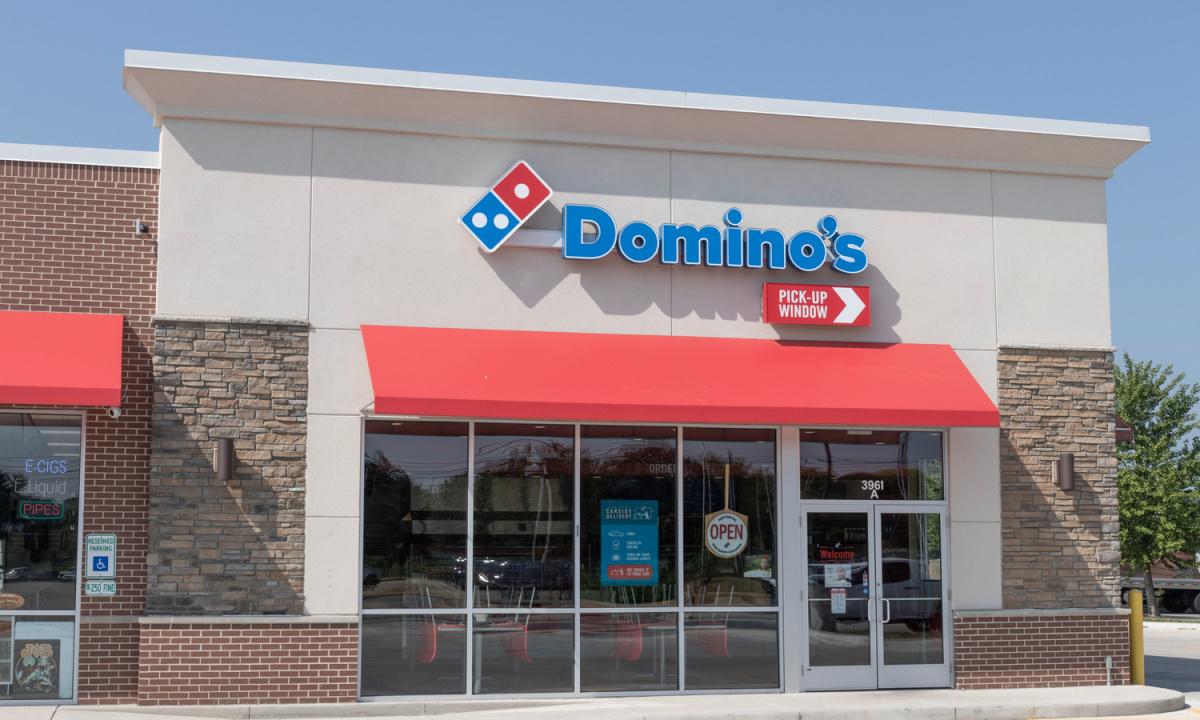
With consumers continuing to feel the impact of years of inflation, Domino’s Pizza is seeing the trend of preferring more budget-friendly restaurant ordering channels continue.
The quick-service restaurant (QSR) giant, which has more than 20,000 locations around the world, shared on a call with analysts Thursday (Oct. 12) discussing its third-quarter fiscal 2023 financial results that pickup sales continued to grow, while delivery continued to fall. Specifically, same-store carryout sales in the U.S. rose 1.9% year over year on top of a 19.6% increase in Q3 2022, while delivery fell 2.3% after a 7.5% decrease last year.
Overall, according to Domino’s CEO Russell Weiner, many consumers are trading down to pizza from more expensive restaurant categories to manage their budgets.
“I think we’re going to continue to see … folks down-switching into the pizza category, down-switching into value,” Weiner said. “This is going to happen, I think, a lot more in carryout than in delivery, because … there’s delivery fees. There are tips. There are things that cause that channel to be a little bit more expensive.”
He noted that delivery customers may instead trade down to preparing their own meals at home. PYMNTS Intelligence’s report “Connected Dining: Rising Costs Push Consumers Toward Pickup,” which drew from a survey of more than 2,100 U.S. consumers, found that 58% of takeout customers pick up restaurant meals to save on delivery fees, and 48% said inflation has made them more likely to choose pickup over delivery.
In fact, restaurant prices continue to rise, even as grocery inflation has tapered off somewhat. The latest Consumer Price Index (CPI) data from the U.S. Bureau of Labor Statistics (BLS), reported Thursday, reveal that restaurant inflation amounted to 6% year over year in October, while grocery was down to 2.4%.
Domino’s, for its part, is leveraging its partnership with Uber Eats, which kicked off this summer, to reach consumers who may be less affected by day-to-day changes in price, with more disposable income to spend on, say, pizza delivery.
“We’re opening up to the Uber platform, and that platform has customers that are higher-income customers in delivery, and so if there is a slowdown in that, we’re now opening ourselves to a platform that really has a little bit more elasticity in that place,” Weiner said.
Indeed, PYMNTS Intelligence bears out that higher-income consumers are disproportionately like to order from aggregators. The report “Connected Dining: Third-Party Restaurant Aggregators Keep the Young and Affluent Engaged,” which draws from a survey of nearly 2,300 U.S. consumers, reveals that only 40% had used an aggregator at least once in the previous six months. Yet that share jumps to 48% for those who earn more than $100,000 per year.
Last month, Domino’s relaunched its rewards program, and on Thursday’s call, Weiner spoke to how this decision incentivizes further pickup sales — a channel that is higher-margin for the restaurant in addition to meeting consumers’ demand for more budget-friendly options.
“We lowered the spend threshold to earn points from $10 down to $5, and this change will make us even more competitive in the carryout segment, where ticket tends to be lower,” Weiner said.